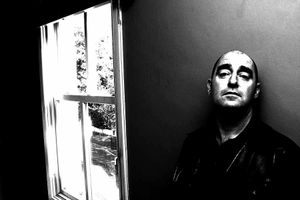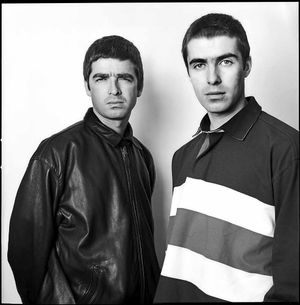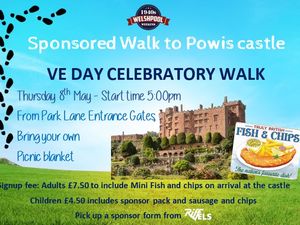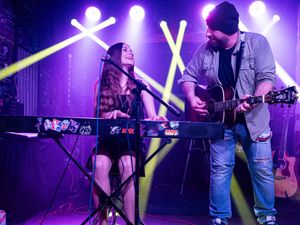Interview: Bonehead talks Oasis ahead of Be Here Now special edition release
They were the biggest band on the planet – in 1996, Oasis had the world at their feet.

They were the acme of rock 'n' roll. They drank champagne, snorted cocaine, hung out with supermodels and flicked the finger to waiting paparazzi.
Prime ministers and Hollywood A-listers wanted to be their mates. Their two Knebworth gigs held 250,000 fans but received ticket applications from 2.6 million. No band, other than The Beatles during the 1960s, had had such a profound effect on the nation's culture and psyche. So when Oasis booked Abbey Road Studios to record their third album, Be Here Now, the stakes could not have been higher. After the success of (What's The Story) Morning Glory, they had everything to lose and nothing to gain.
At the time of its release, Be Here Now was the most popular record of all time. It received unanimous and truly amazing praise from critics. It shipped 424,000 copies in the UK on the first day of its release and 696,000 by the end of the week, making it the fastest-selling album in British history. And though history has been unkind to the record, re-evaluating its artistic merit, it remains a sensationally popular record. Lauded as being the most effusively praised record since Sgt Pepper's Lonely Hearts Club Band, Be Here Now was a unique recording.
Rhythm guitarist Paul 'Bonehead' Arthurs recalls: "The sessions were difficult. We'd reached the height at that point and we couldn't make a move. Wherever we went, there was paparazzi and the whole media circus. All eyes were on us."
It could have been so different. There was a moment, at the start of Be Here Now, when Oasis could have exceeded expectation – when they could have justified the hype.
The album is now being remastered and reissued in October to commemorate 20 years since they started to record it. It will include the original demos laid down for the album, and these are what Bonehead remembers fondly. "Noel brought back the demos from Mustique," he reminisces. "They were incredible, they weren't usual Noel demos. Normally he'd send them with one or two acoustic guitars and a vocal and it was great. But he came back from Mustique and there were keyboards, bass, harmonies – they were fully fledged songs. It was really f***ing exciting.

"And then we were booked into Abbey Road, which is iconic. But from there, it just went downhill. The papparazi were breaking into the studio, looking for drugs, looking for a story. I was staying in an apartment with Owen, the producer, which was next door. We were living and sleeping there. But we had to put a disguise on before going to the shops in the morning."
On Definitely Maybe and (What's The Story) Morning Glory, Oasis had been able to switch off and focus when it came to recording. They were afforded no such luxury for Be Here Now. "Our sacred space was the studio.
"No matter how big or small you are, you shut the doors and get on with it. But the media circus was always in the back of our mind. Owen and I were in the apartment next door and it should have been incredible.
"But when I wanted to nip to the pub with Owen for a pint I was told I wasn't allowed. We couldn't do it. We had orders from the office. There were paps outside."
The record was made when the band were on the crest of a wave. They had no complaints about the fuss and scrutiny that surrounded them. They were living out their dreams. "It was mind-blowing at the time. It all happened so fast," adds Bonehead. "It's what we lived and breathed and what we wanted to do from the start. We wanted it more than anyone, we believed more than anyone. But poor old Liam would open his bedroom curtains and 40 f***ing cameras would be snapping away. I think he dealt with it admirably. I think he still does."
Be Here Now was the definition of ambition. While other bands were making three-and-a-half-minute Britpop songs, Oasis were recording nine-minute epics like All Around The World with 40-piece orchestras.
"Noel had that song from back at The Boardwalk, in Manchester. It could have gone on the first album but he said he wouldn't release it until he had a 40-piece orchestra. And by the time of Be Here Now, we could afford that. Now there's a man with a vision. He knew, even before the first album, where he was going.
"You know, the album eventually got slagged off. And as the years go by, even Noel has slagged it. But I personally love it. My Big Mouth, Magic Pie – what great tunes." Drugs were as common as tea, though Bonehead tended to steer clear.
"Yeah, there's all the drugs. And if Noel says he was doing a lot of cocaine then he was doing a lot of cocaine. But one thing's for sure, Noel wasn't snorting 10 minutes before he was putting a guitar part down, he wasn't doing it before he went on stage. We were too professional for that. I certainly wasn't doing cocaine. On a Friday night I'd go home to my family while the others partied."
As a live act, there was no-one better in the world. During the mid-to-late-90s Oasis were on fire. That meant they never had a day off, which led to inevitable problems.
"There were loads of incidents, Liam would be like, 'f*** this, you can f***ing sing, I'm not doing this gig. I'm going to go and buy a house'. From day one to Knebworth, it was constant, man. In hindsight, maybe we should have taken a break.
"There should have been time to buy a car, have a holiday or buy a house. But we didn't. We kept going and going and going. We didn't complain. But s*** happens on tour.
"Generally you're big boys and it's forgotten the next morning. I had a good relationship with everyone. And I'm closer to Liam now than I've ever been in my life. I always used to say I was the rhythm guitarist and tour psychiatrist. If there was a little fallout when we were hurling down the motorway, I'd be the one pulling Noel and Liam apart and telling them to get over it and sit down. I always did jump in."

Bonehead remembers the colossal nature of Knebworth – the iconic gigs that recently celebrated their 20th anniversary. Flying around the site by helicopter showed him the magnitude of the gig. "It was massive. It was enormous. Just walking on stage and hearing the crowd: I'll never forget that. Then John Squire joining us for Champagne Supernova was a total buzz. I was a fan-boy on stage when John Squire came on.
"When I first heard the demo for Champagne Supernova, I cried. I'm a Cancerian, so I'm pretty weepy. I'm nearly crying now. Noel had the song and he played it. We'd had a few beers. It was amazing."
It's been 20 years since the start of Be Here Now and Bonehead's had time to take stock. When Oasis were huge, he didn't dwell. Life moved too quickly for him to think. The safest place was in the eye of the hurricane.
"We didn't have a laptop. We couldn't Google ourselves or look on Twitter so we couldn't see what was going on. We didn't even have mobile phones. We were just hurtling round the world doing it and leaving this trail behind us.
"I didn't really realise how big it got. It really took me two years after leaving the band to work it out. I got my head round it in 2001/2 – that was when I realised it. Before that, it was a rollercoaster, let's go for it."
He's in touch with Liam every day. "I'm very close to him. We try to get away and have a weekend in Europe or go and have a week away."
He left when he knew he could no longer give it 100 per cent. "We were recording Standing on the Shoulders of Giants in France," he said. "It should have been the best time ever but it just felt a bit flat to me. There wasn't that spark. You couldn't be in that band and not give 100 per cent. Anything less, you had to go. I wasn't going to lie. I sat down and said 'it's time to go'. I've never regretted it. I just wanted to spend a bit of time with my family."
Be Here Now, the Chasing The Sun Edition, will be released on October 7 as a special edition 3xCD set. It will include the Mustique Demos, 14 previously unreleased demos recorded on the Caribbean Island in 1996.
By Andy Richardson





